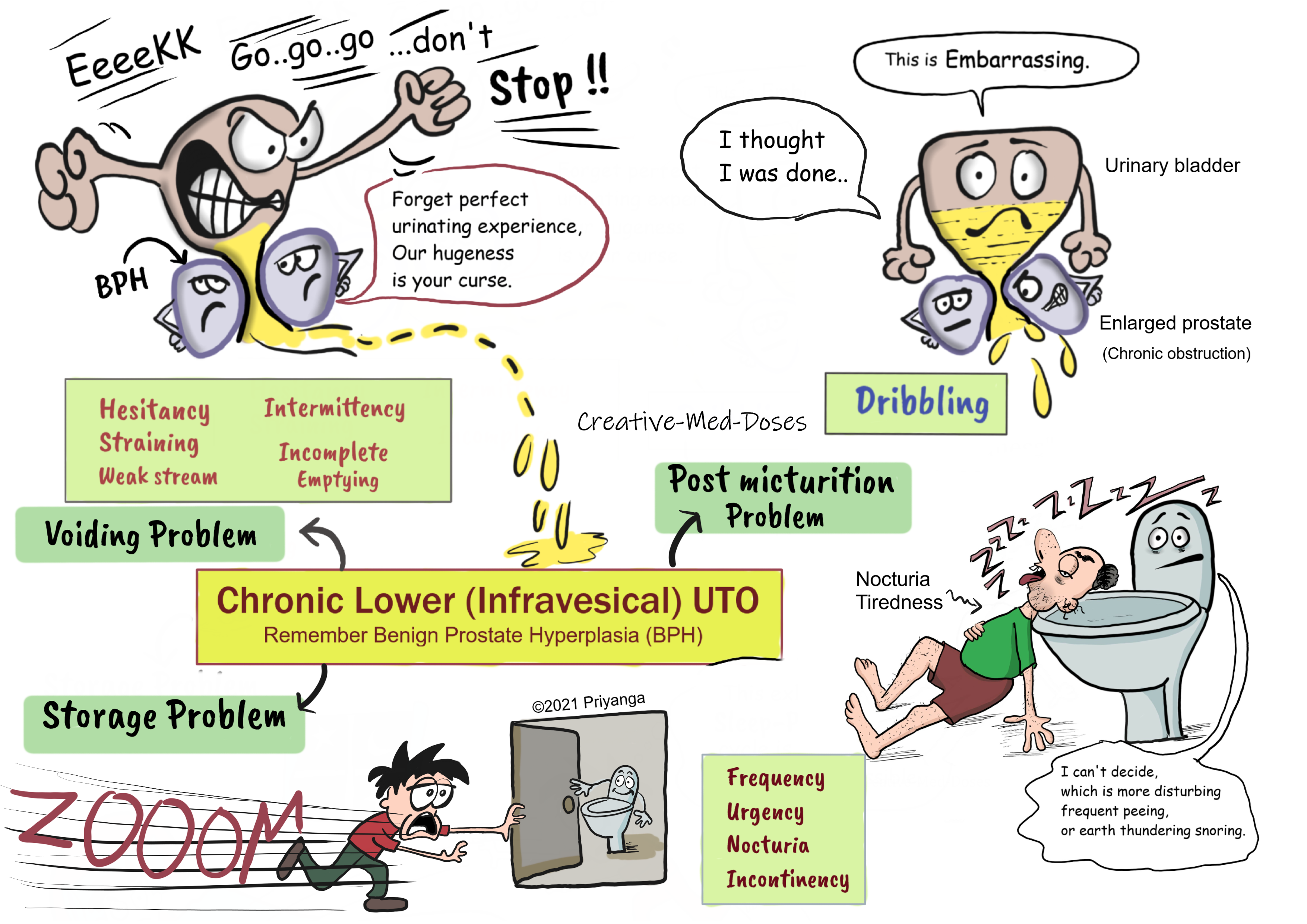Lower urinary tract obstruction: clinical features
Lower urinary tract (infravesical) obstruction can be acute or chronic. The clinical features depend upon duration, etiology, and site of the obstruction
Acute obstruction
Acute obstruction is an emergency, and obstruction should be relieved as early as possible, remember stone lodged at the bladder neck.
Urinary retention- acute blockage causes impaired urine flow and urinary stasis. It increases hydrostatic pressure in the urinary bladder.
Suprapubic pain- due to urinary retention and stretching of the bladder, it is excruciating pain.
Palpable bladder- the distended bladder is palpated near the lower abdomen (suprapubic area).
...

...
Chronic obstruction
Chronic obstruction presents with LUTS (lower urinary tract symptoms) like in Benign prostatic hyperplasia.
Lower urinary tract symptoms are divided into three major categories -
Storage problems
- Frequency- Increased frequency of diurnal urination
- Nocturia- Increased frequency of nocturnal urination
- Urgency- Relative inability to postpone urination
- Incontinence- Involuntary leakage of urine
Voiding problems
- Hesitancy- Experiencing a delay before being able to start urination
- Straining- pushing or straining to start urination
- Weak stream-reduced force of the urinary stream
- Intermittency- urine stream stops and starts in between urination
- Incomplete emptying - feeling that bladder has not fully emptied after urination
Post micturition problems
- Dribbling – leakage of a small amount of urine shortly after believing that urination has finished
Revision for today Friedreich’s ataxia: absent frataxin - Creative Med Doses
Buy fun review books here (these are kindle eBooks you can download kindle on any digital device and log in with Amazon accounts to read them). Have fun and please leave a review.